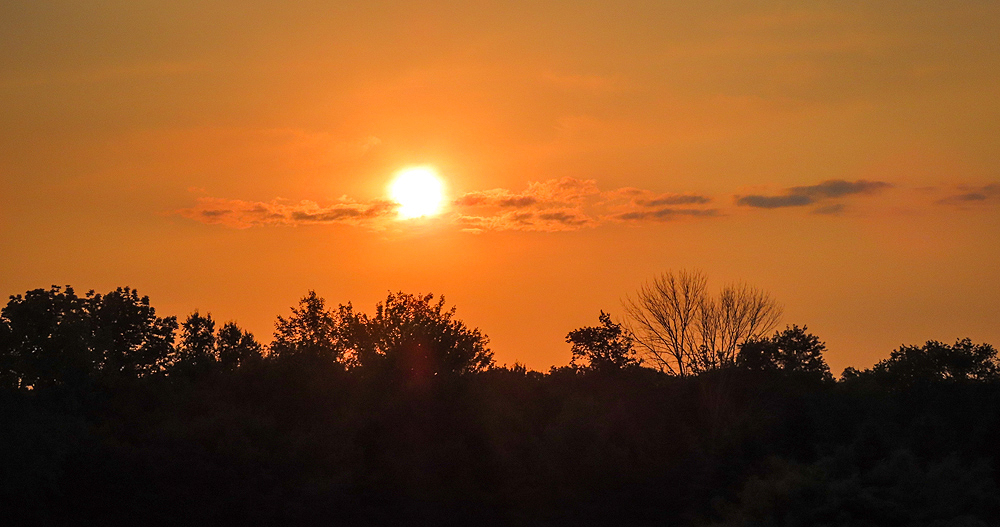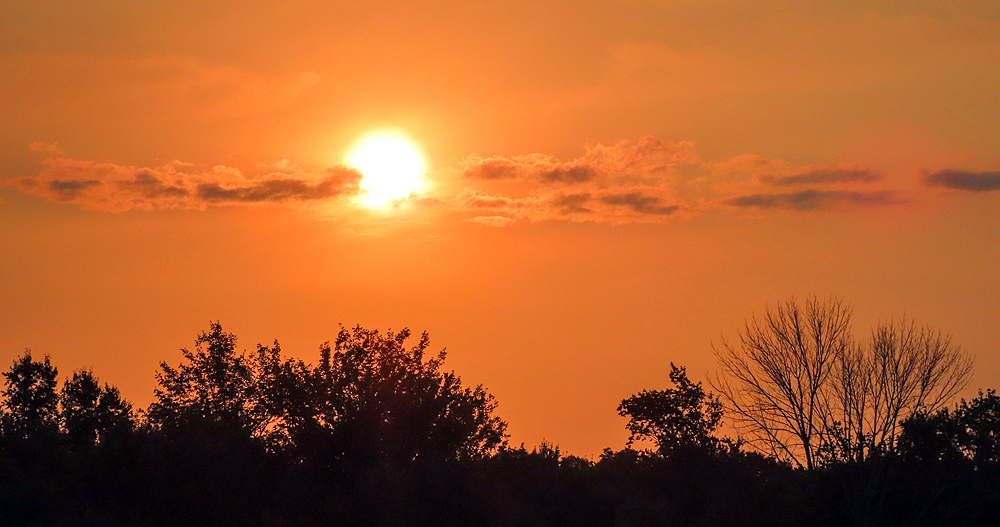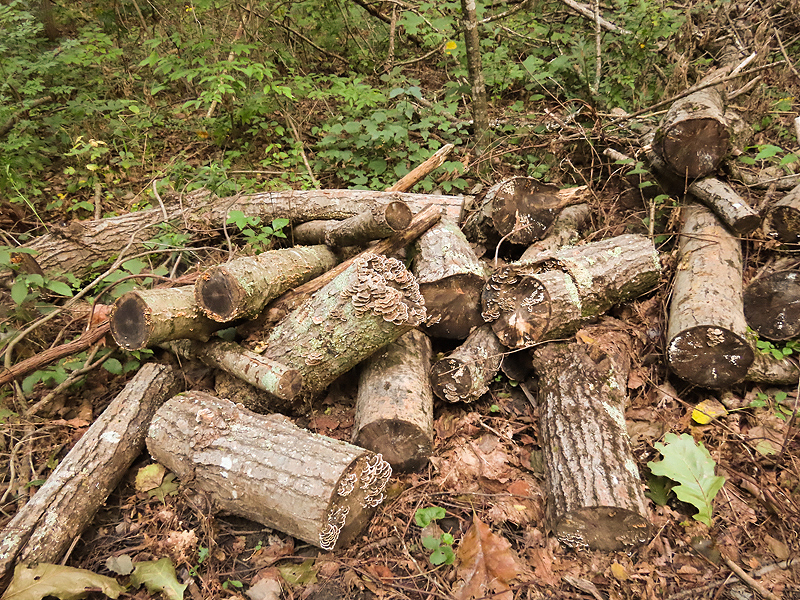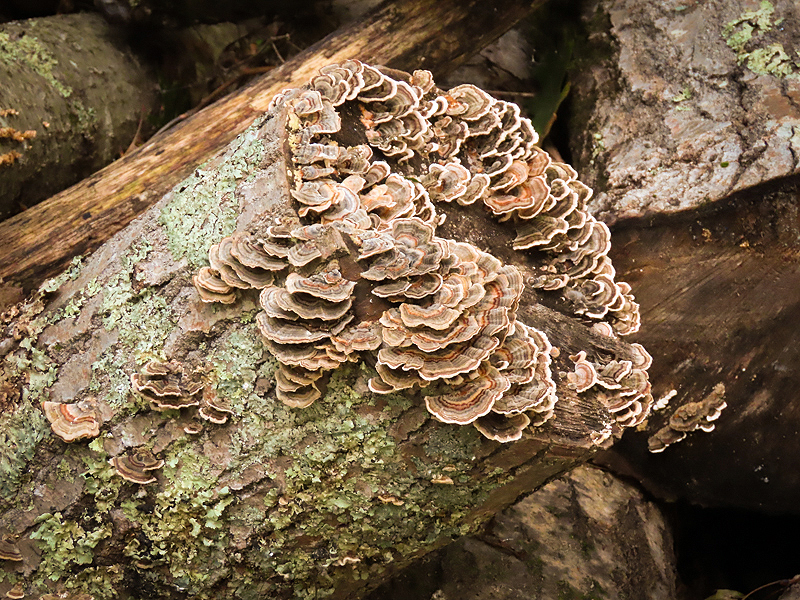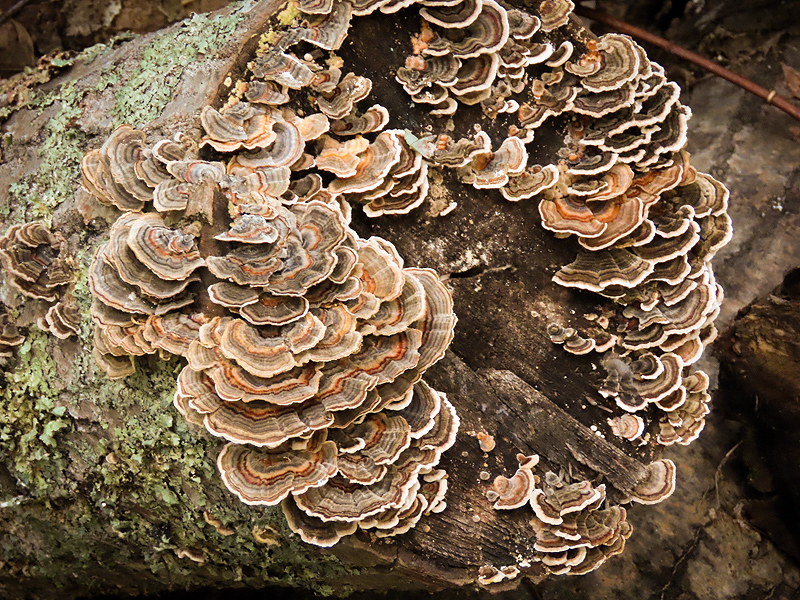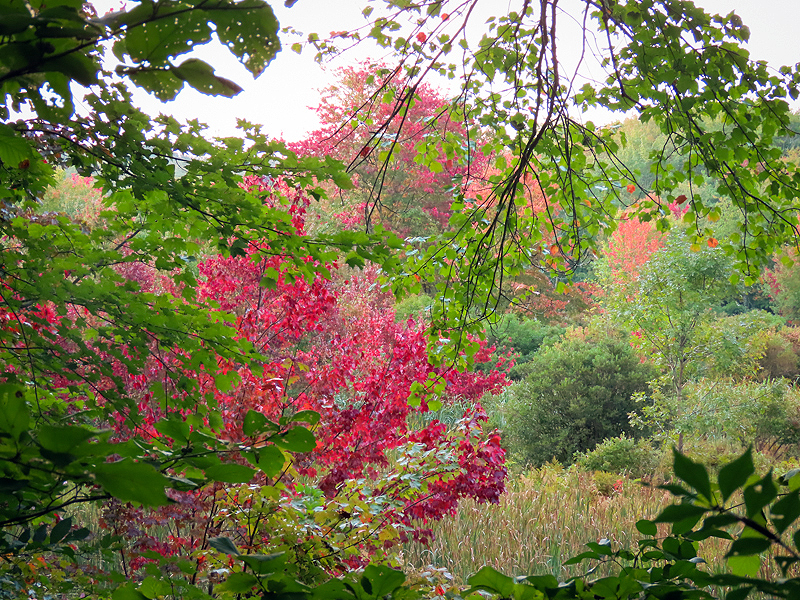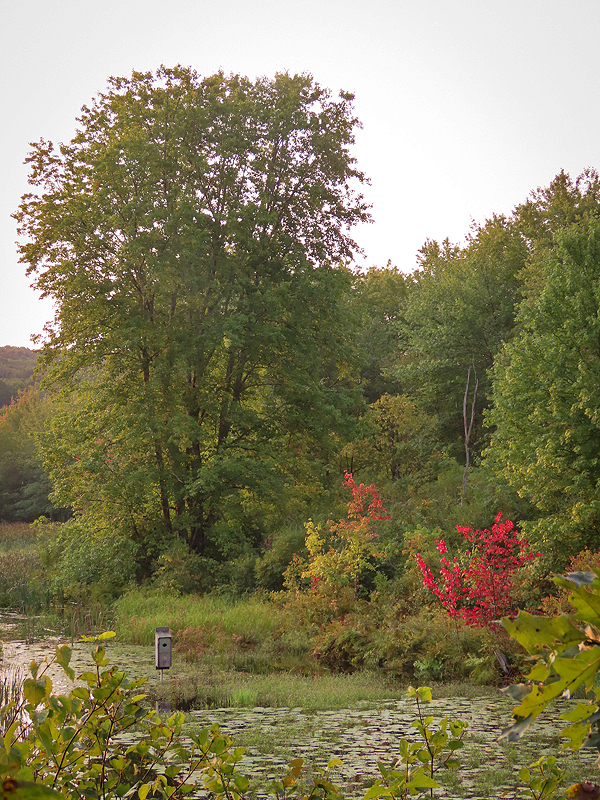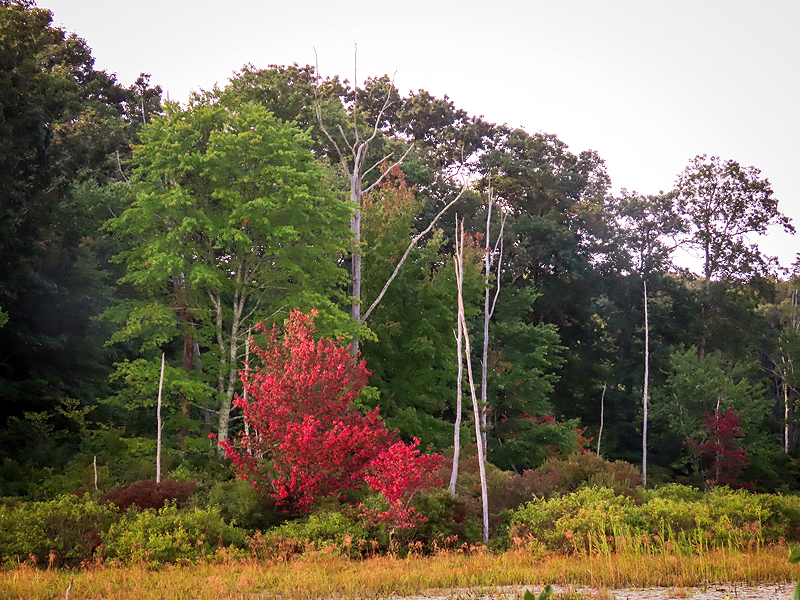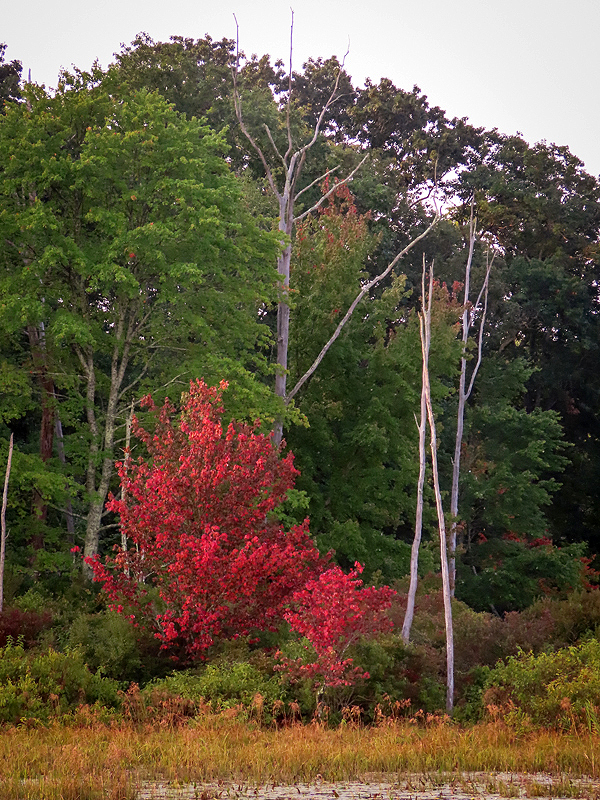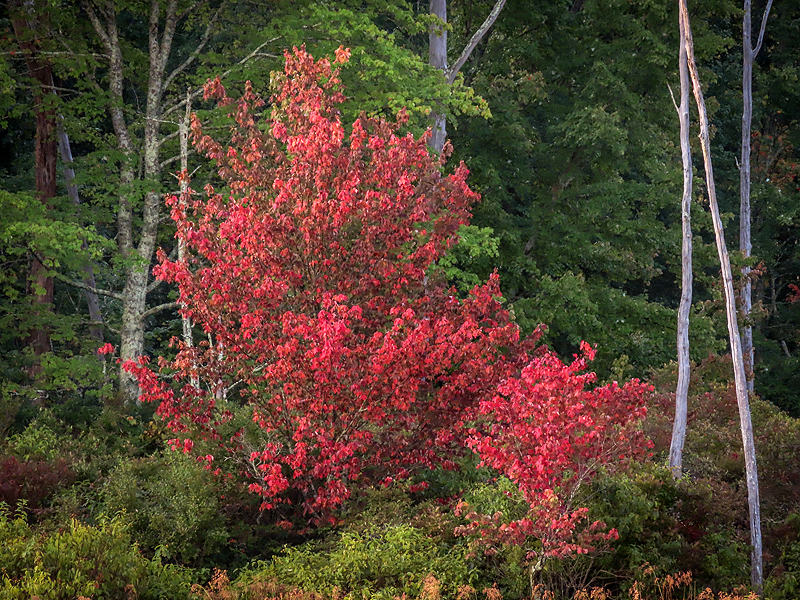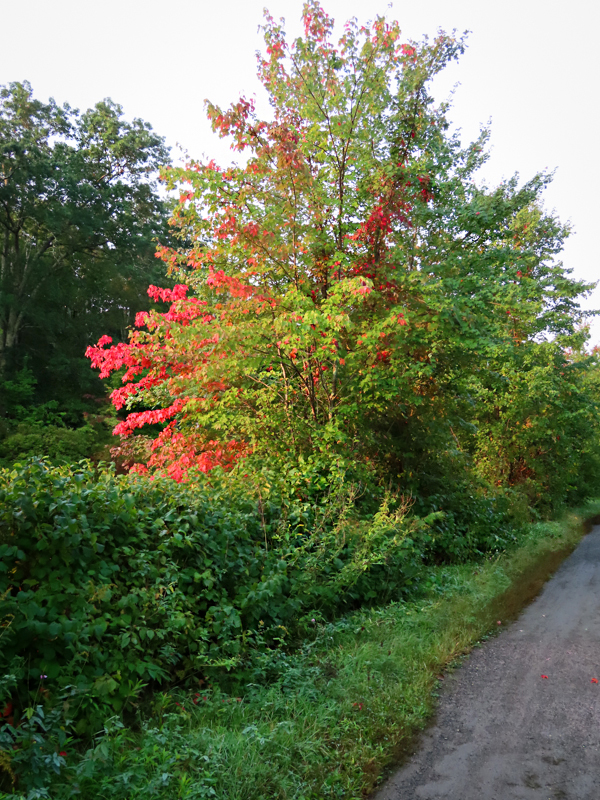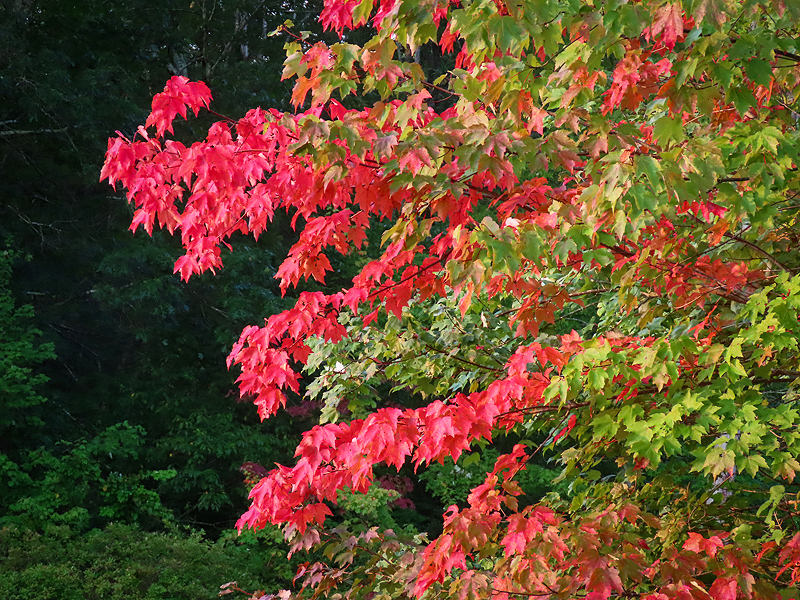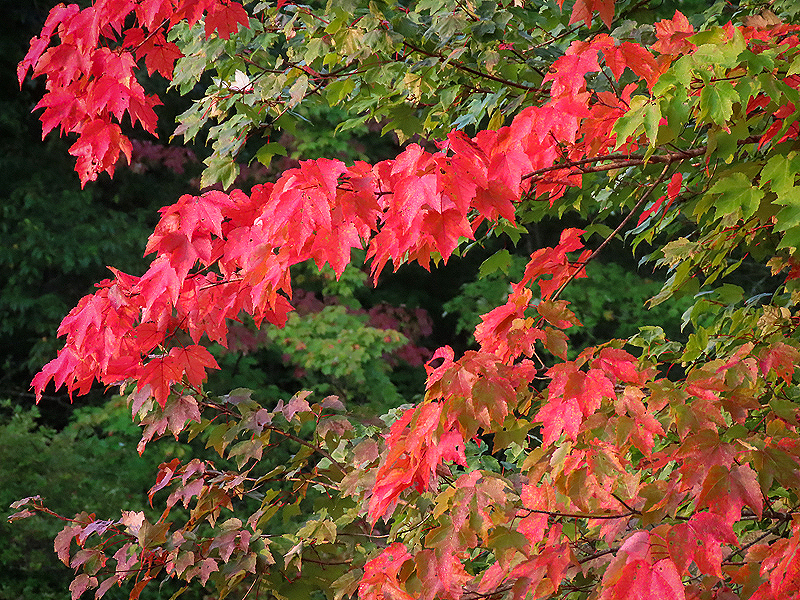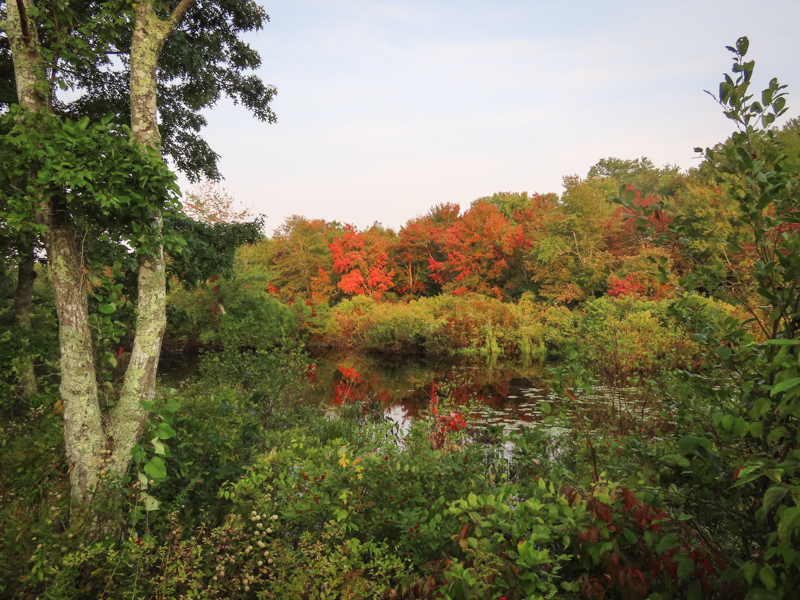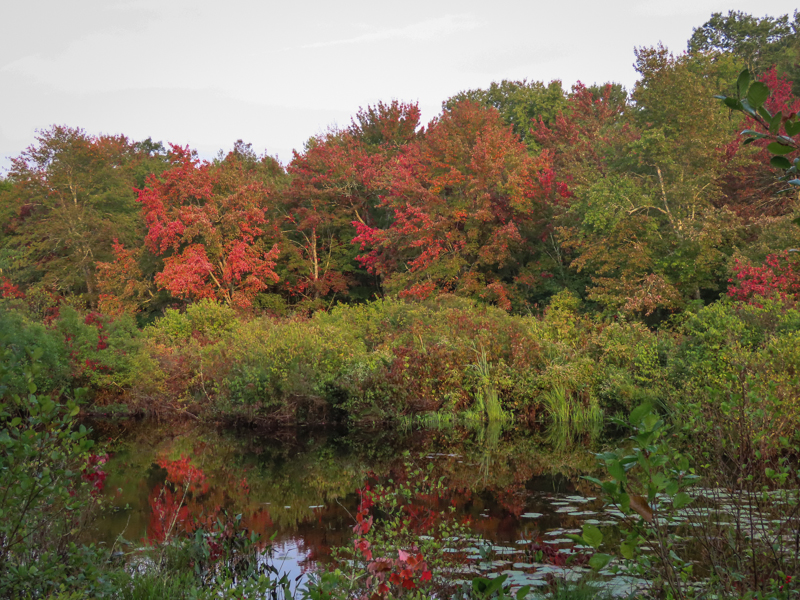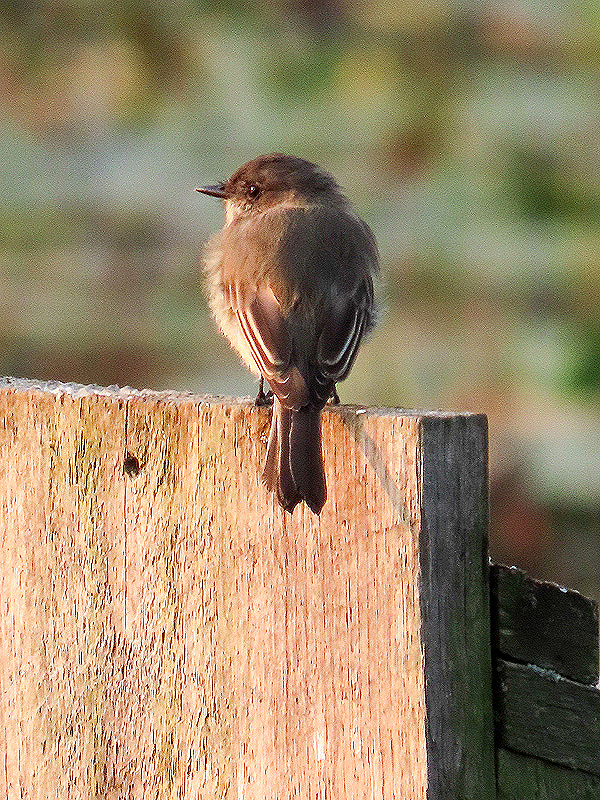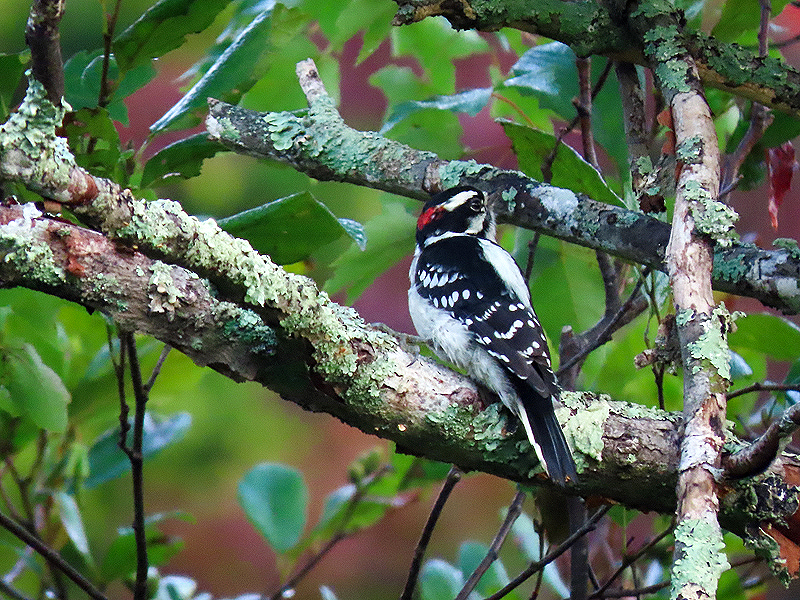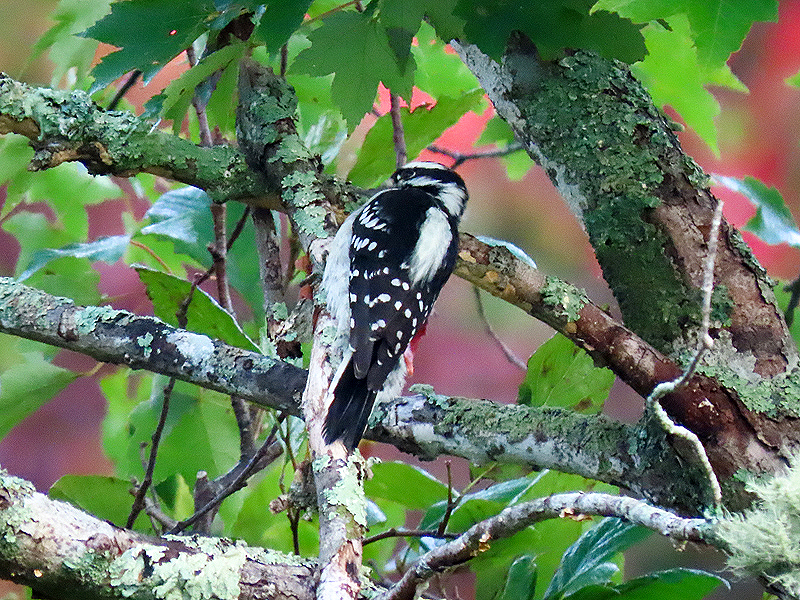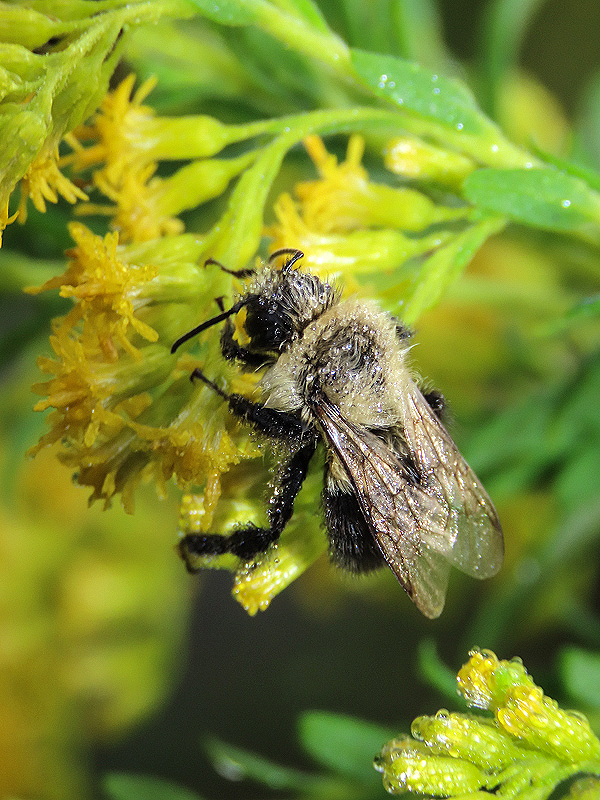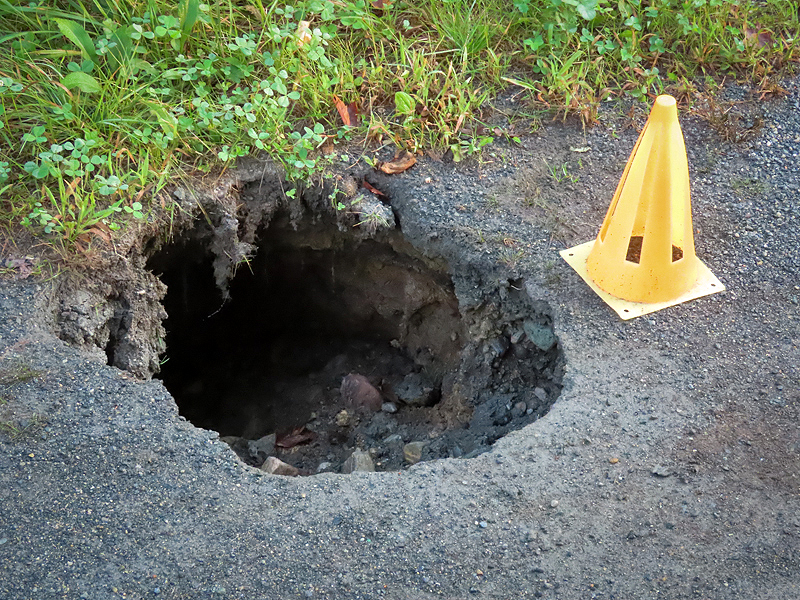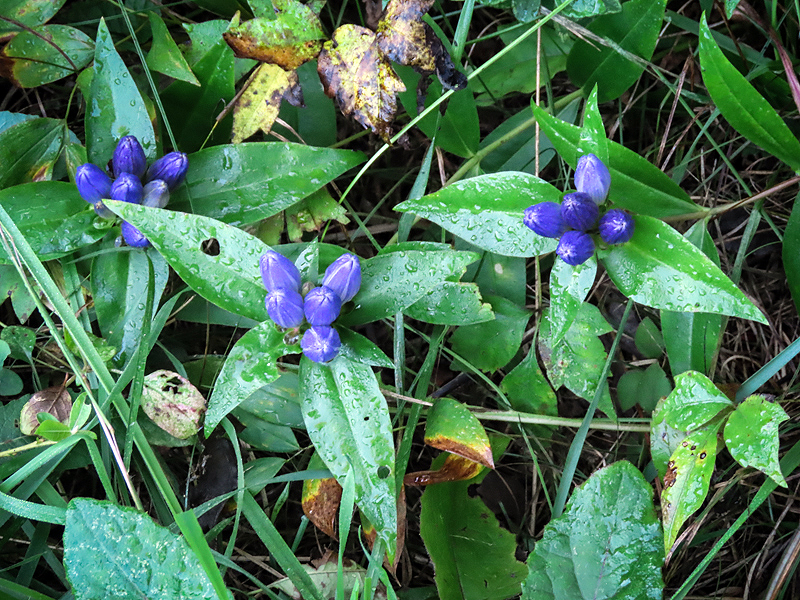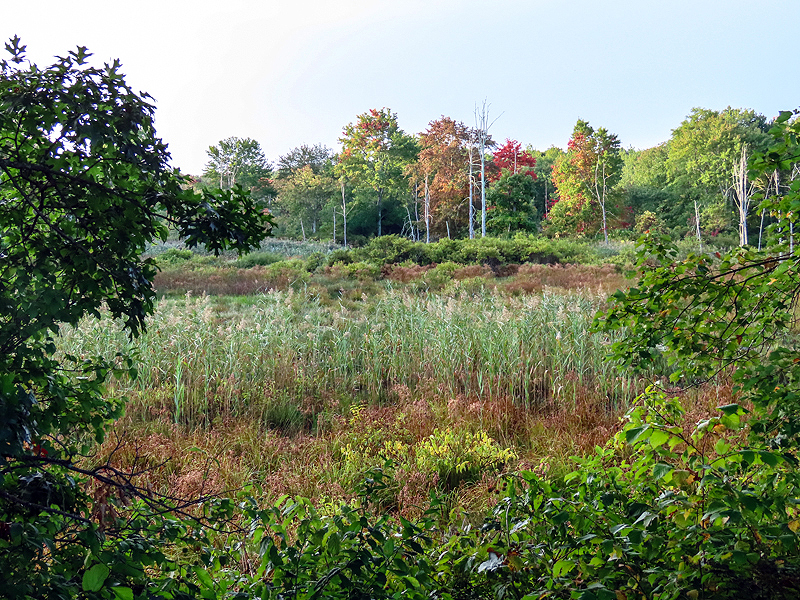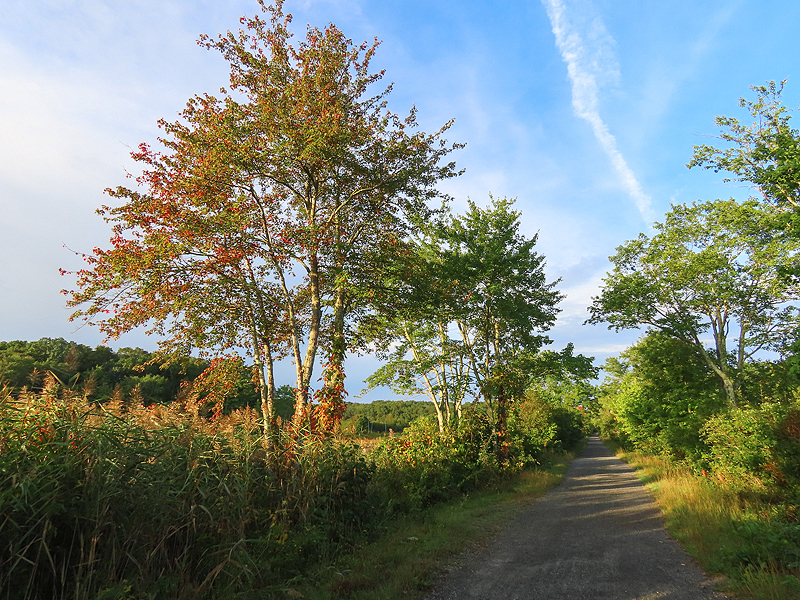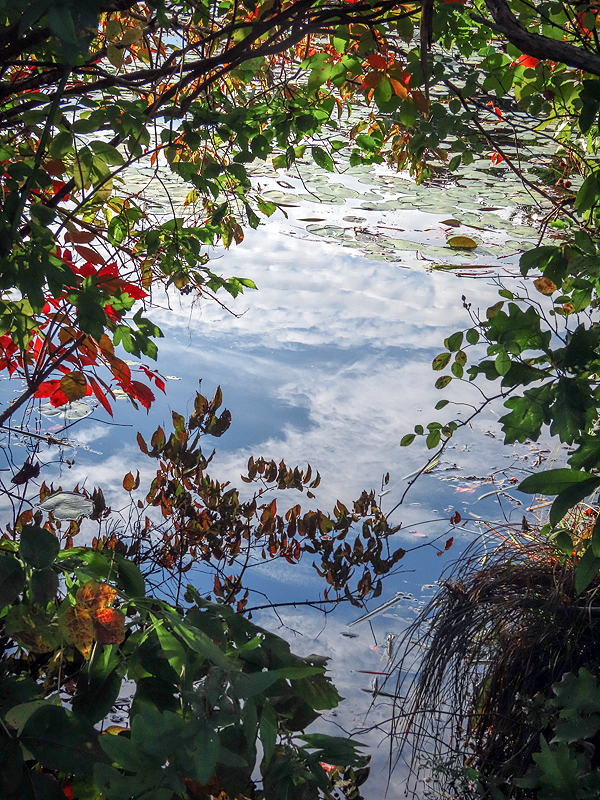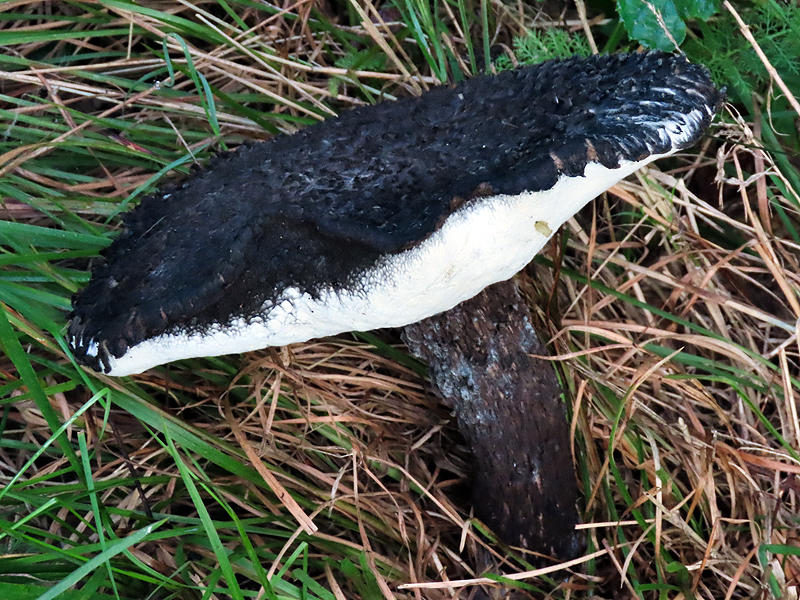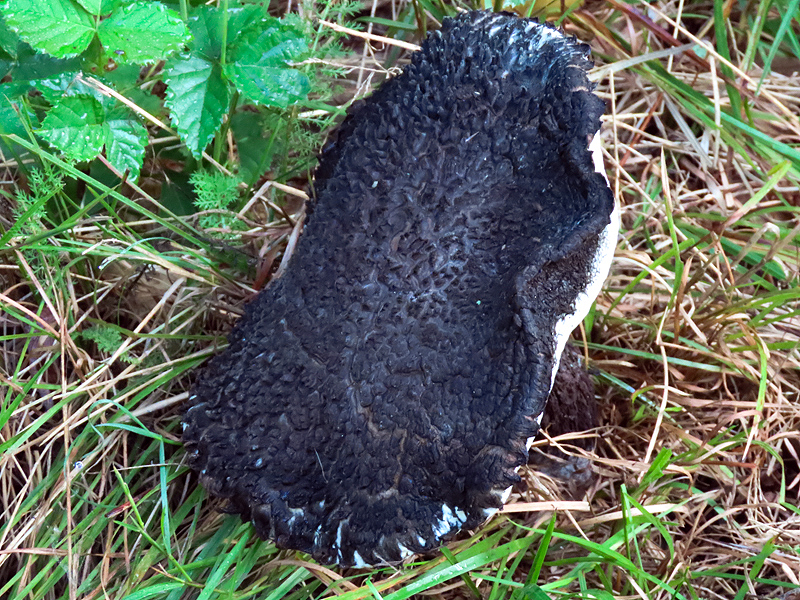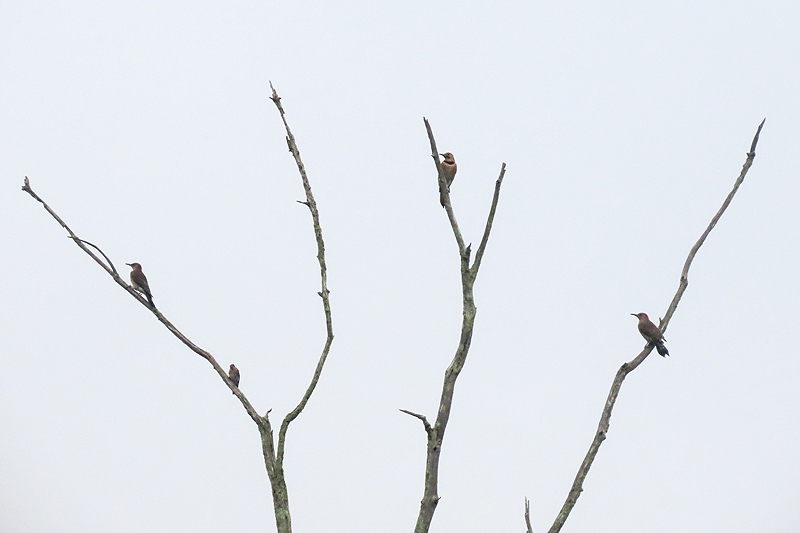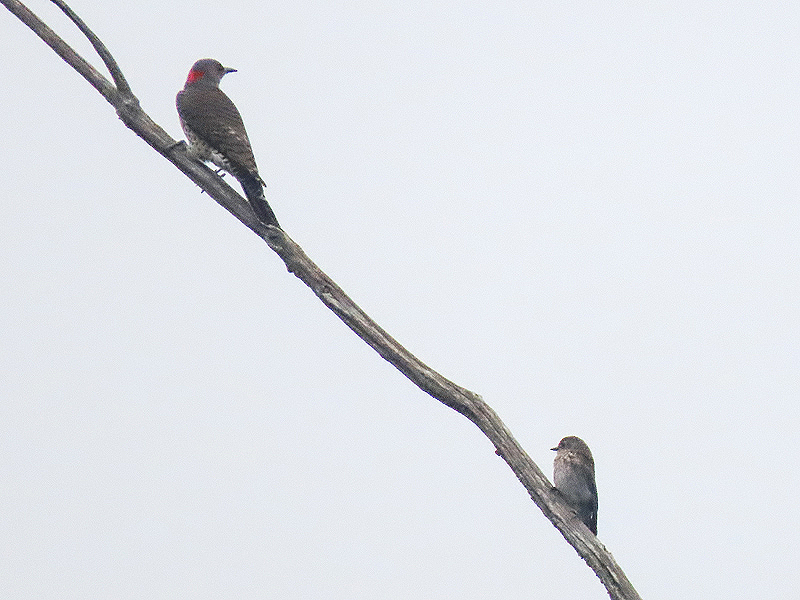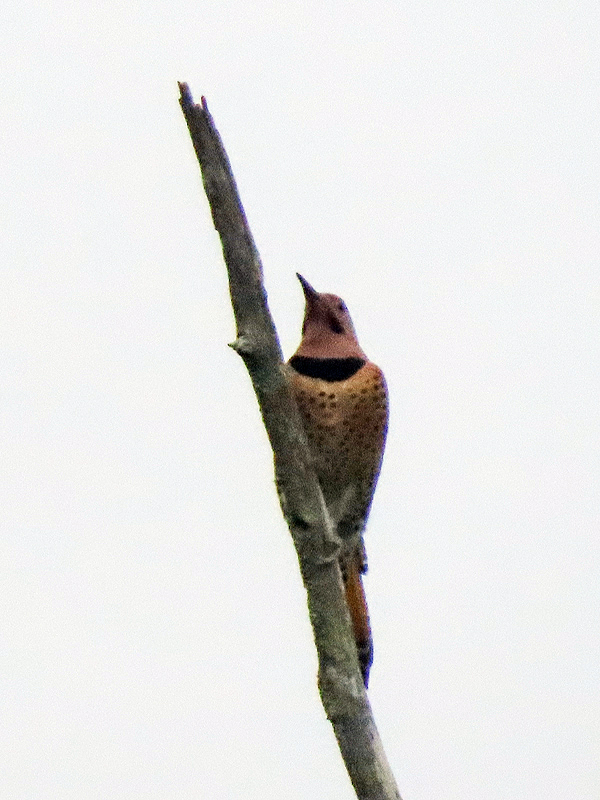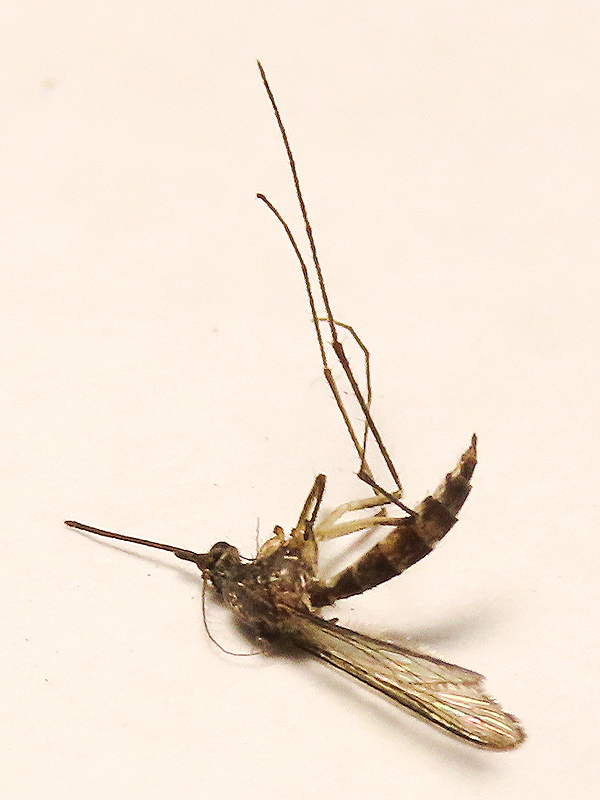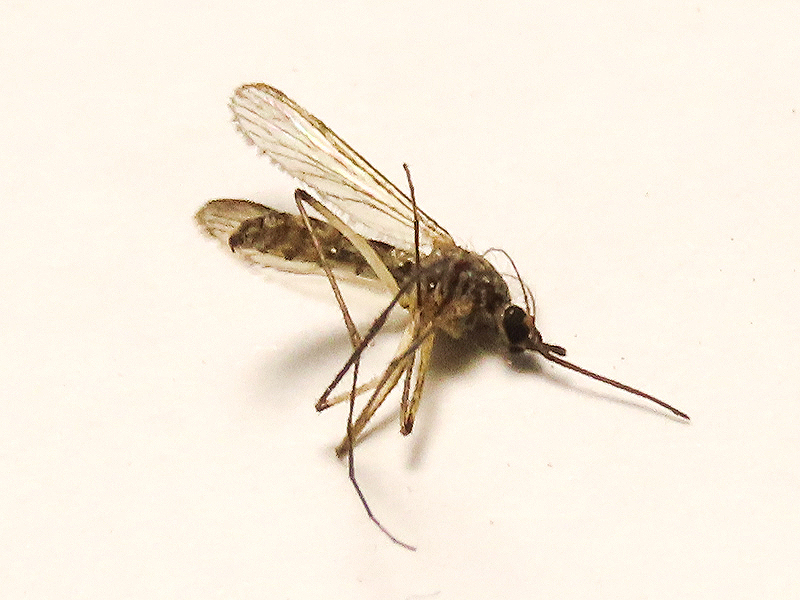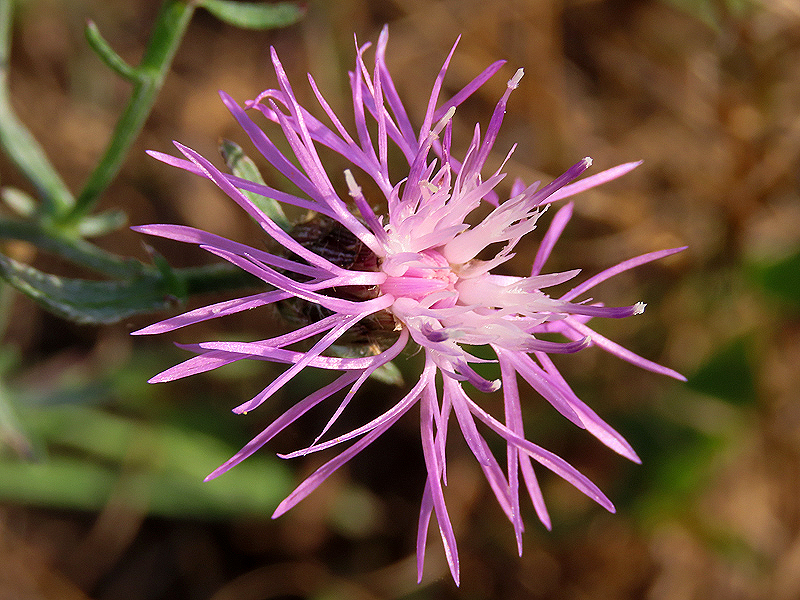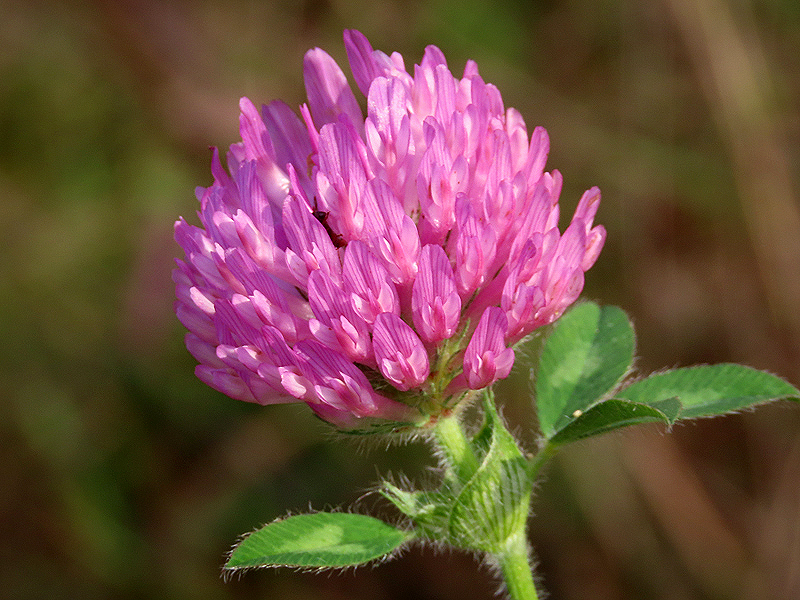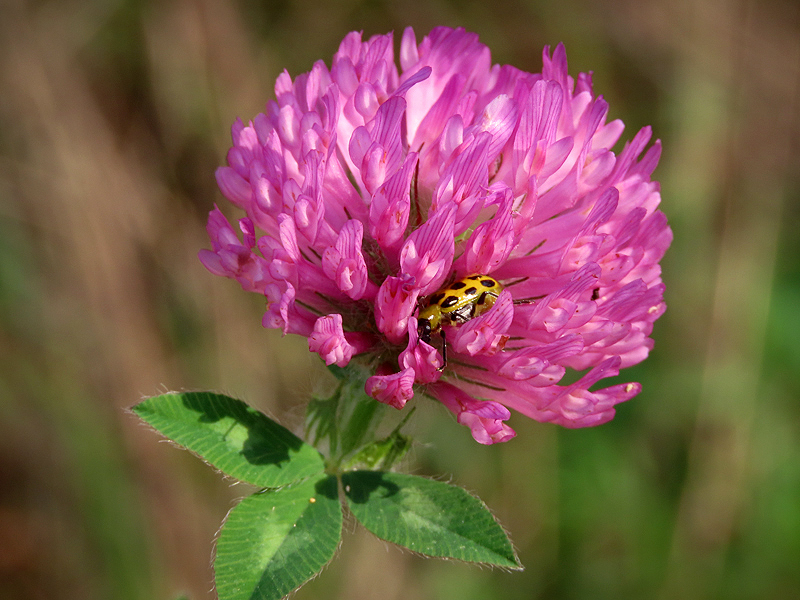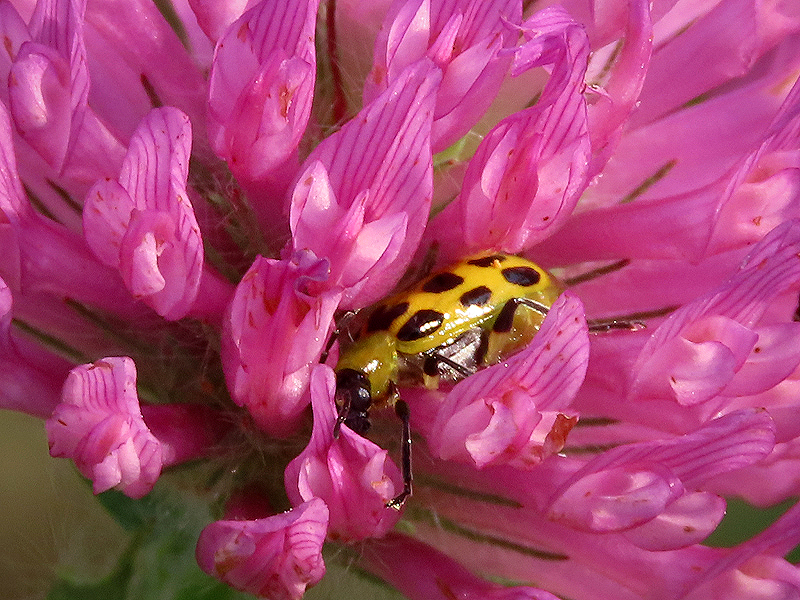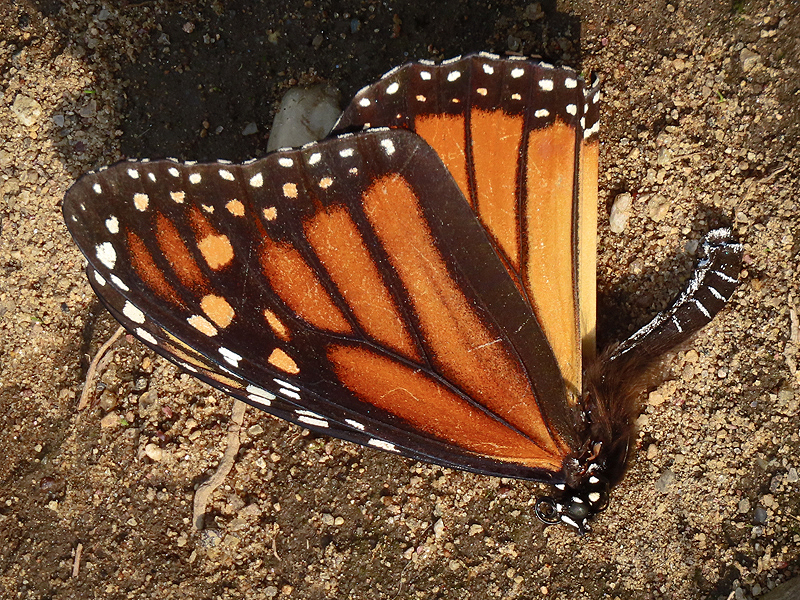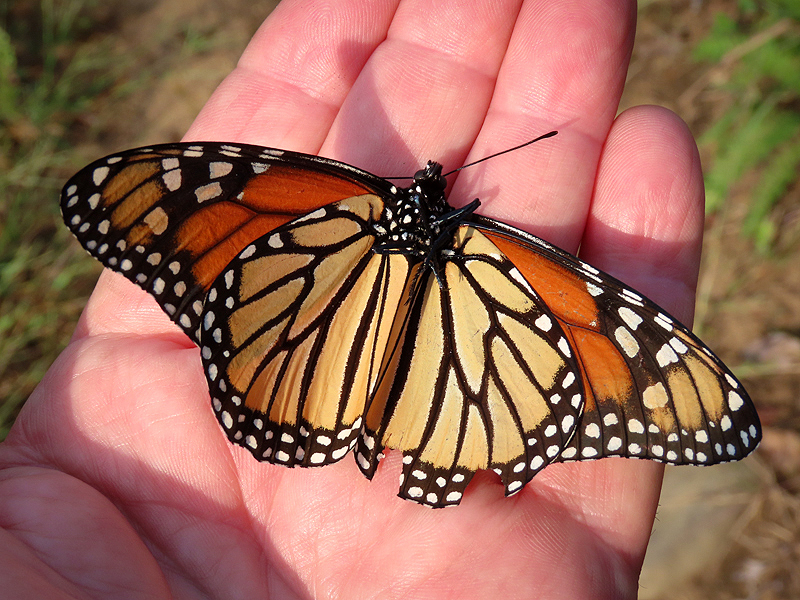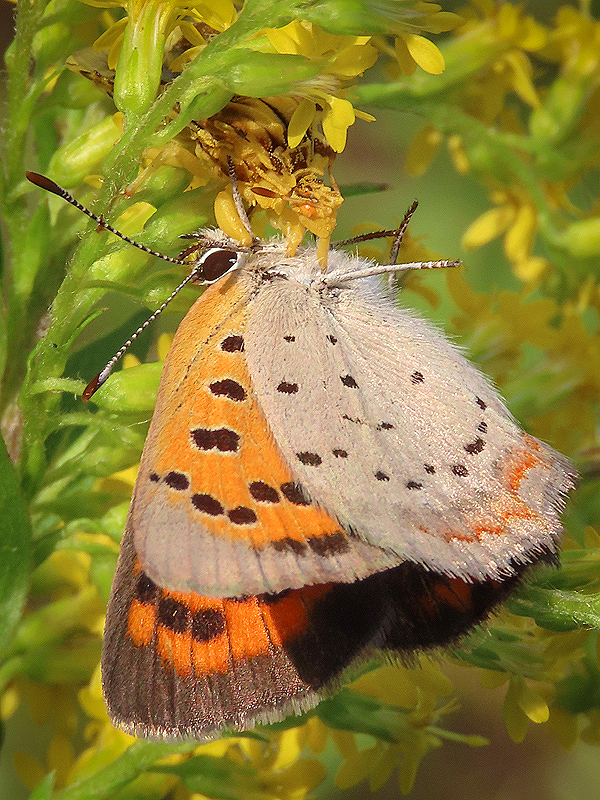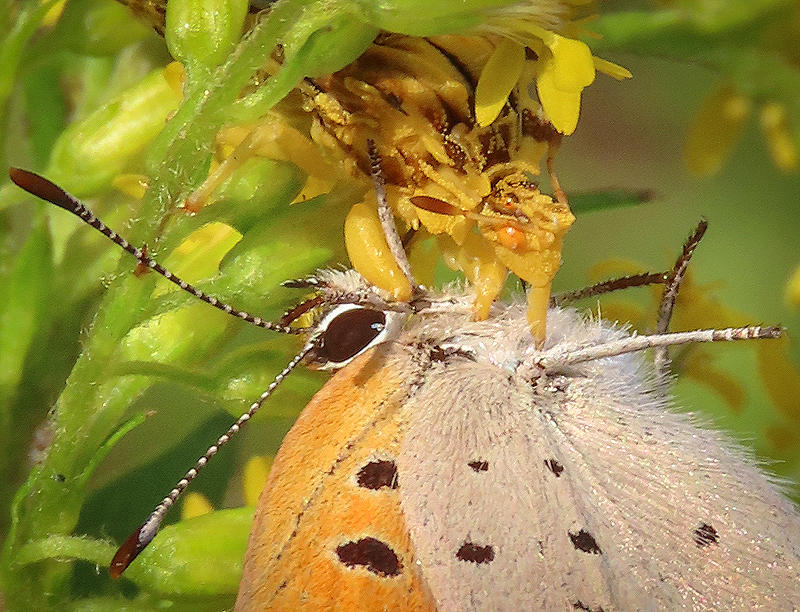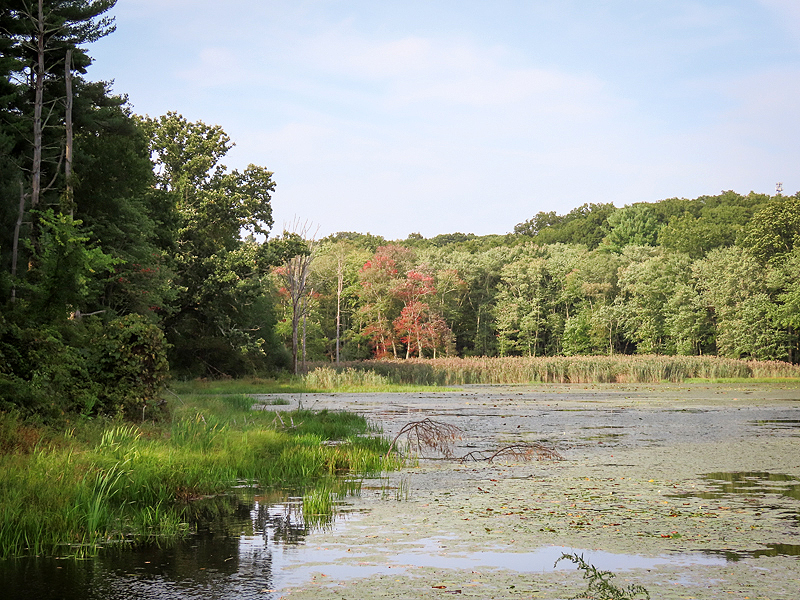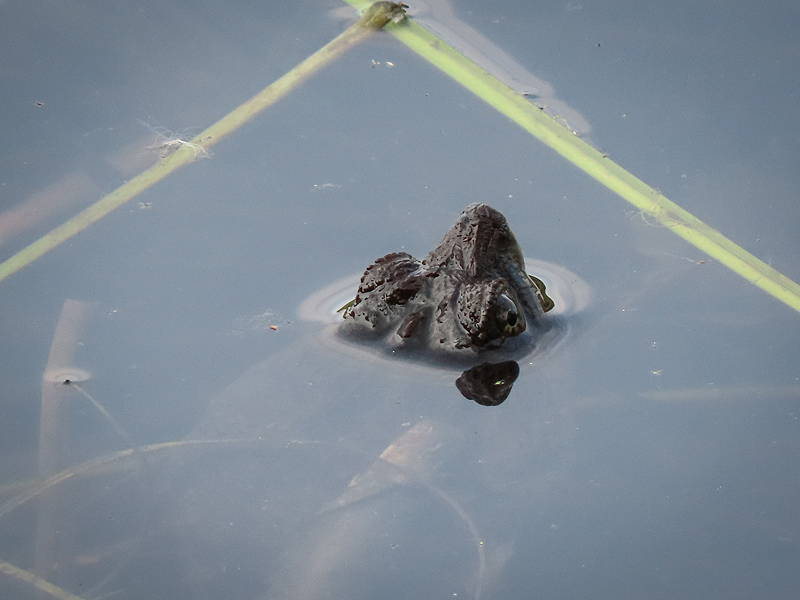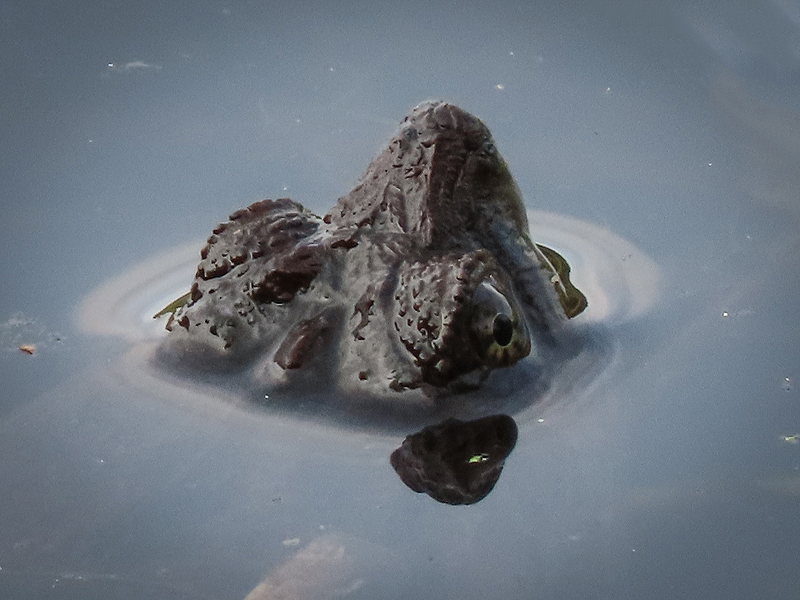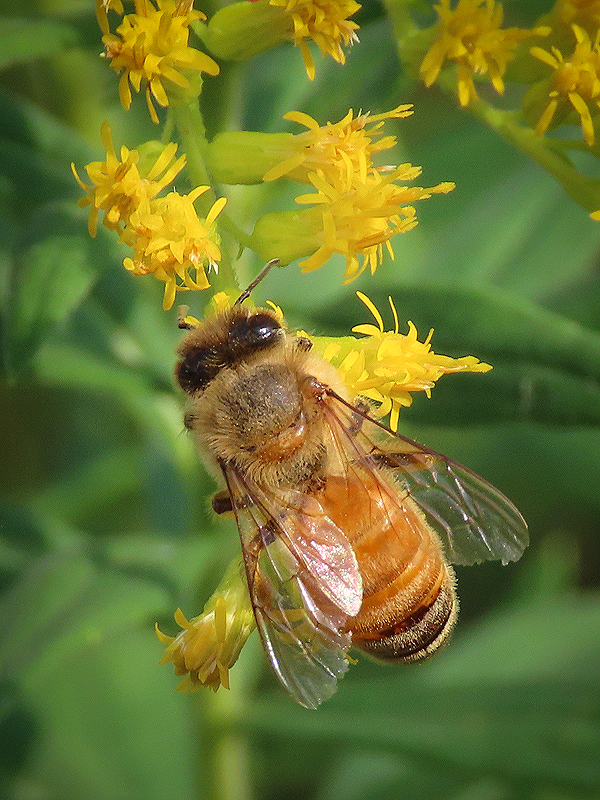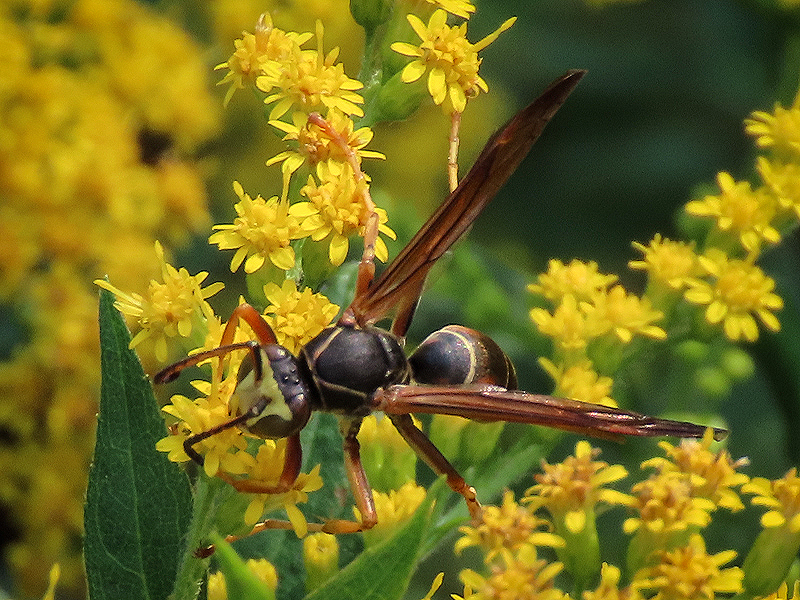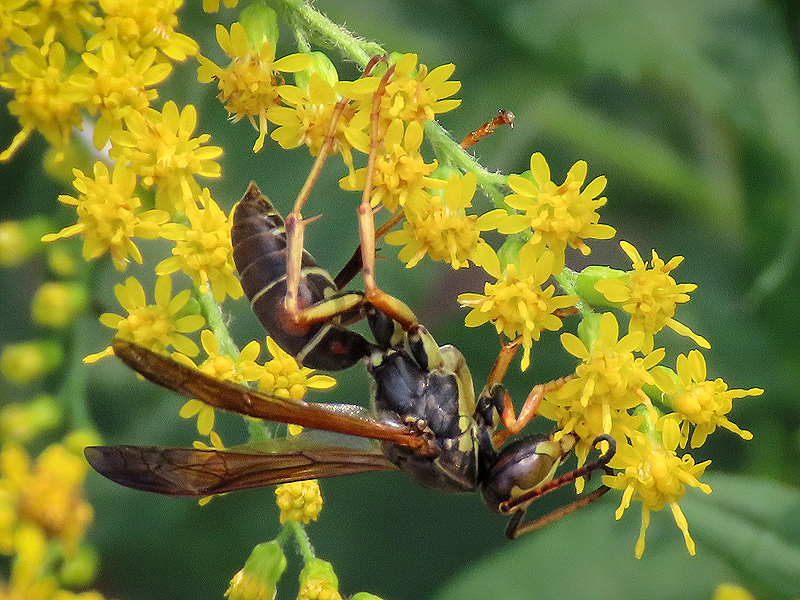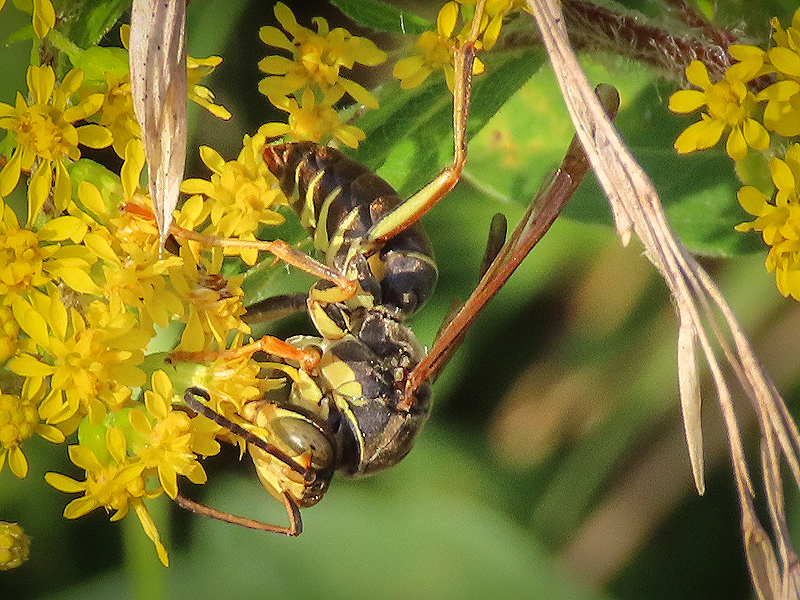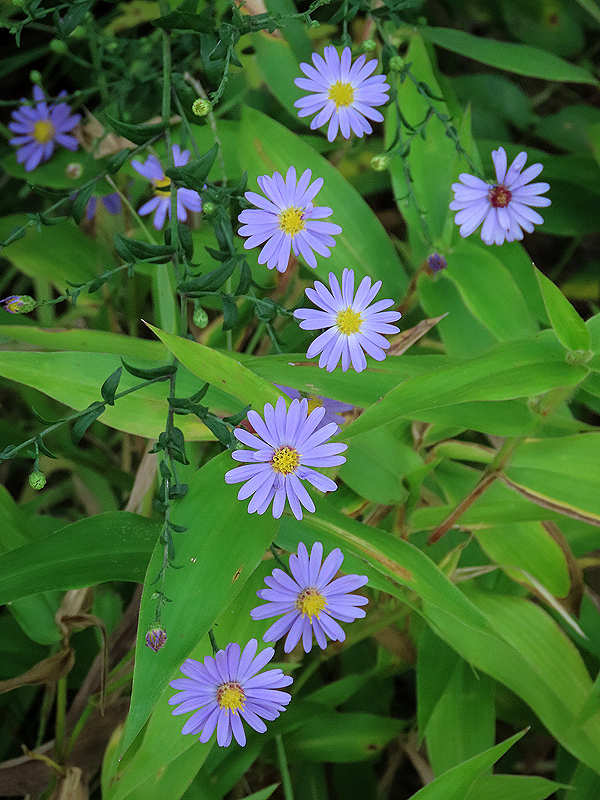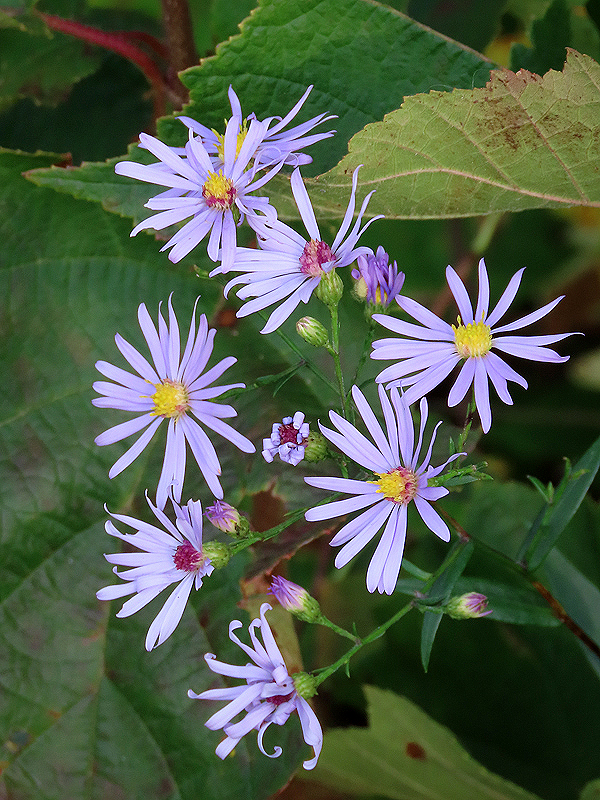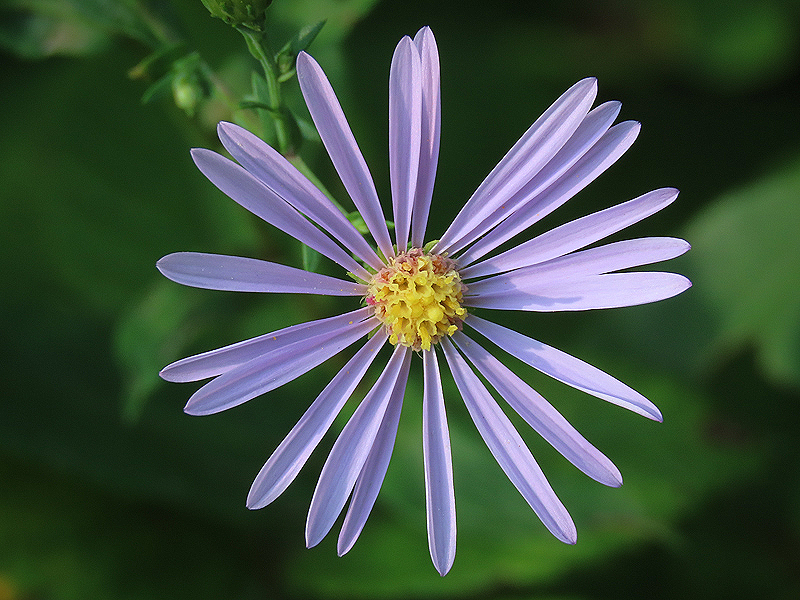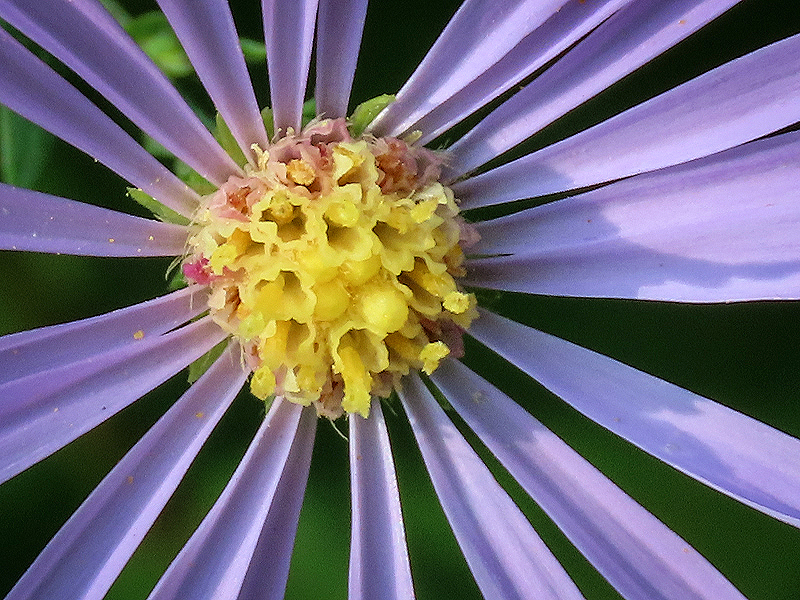Along the Air Line... 2021 - Summer, Part 17 The Air Line Trail in Eastern Connecticut - Stan Malcolm Photos |
HOME: Air Line... 2021 Pages Menu Stan's FlickR Albums |
September 12th. Deep red sky as I approached the trail. |
|
|
|
Decaying logs from trees that fell last year. |
Turkey-tail fungi (Trametes versicolor). |
|
A lot of the Red Maples (Acer rubrum) have gone autumn red in just the past couple of days. |
|
|
|
|
|
|
|
|
|
|
The usual Eastern Phoebe (Sayornis phoebe). |
A male Downy Woodpecker (Picoides pubescens). |
|
|
Bumble Bee (Family Bombidae) stayed out overnight and got covered in dew. |
No one fixing this yet. |
September 14th. Closed Gentian (Gentiana andrewsii). |
A nice cool morning but humid and plenty of mosquitoes. |
It has gotten very hard to see the marsh. Invasive Common Reed (Phragmites australis) and various shrubs and young trees block the views. |
|
A large Old Man of the Woods fungus (Strobilomyces sp.)... |
... with Hypomyces or other white fungal mold growing on the pores. |
Thanks to Heather and Tee for identifications. |
September 15th. Three Northern Flickers (Colaptes auratus) far out in the marsh, plus another bird... |
...maybe an Eastern Phoebe (Sayornis phoebe) which hasn't been on it's Wood Duck house perch lately. |
Noisy long distance low light closeup of a Flicker. |
One of the swarm of mosquitoes at and near Raymond Brook Marsh lately. |
John Shepard of the Connecticut Agriculturtal Experiment Station writes that "This mosquito appears to be Ochlerotatus (aka Aedes) trivittaus, which is a species that develops in "floodwater" pools. It been abundant this summer following the heavy rainfall that the state has received in July and August." |
|
An afternoon walk at two spots along River Road, first near the Blackledge River bridge. A late bloom of Spotted Knapweed (Centaurea maculata). |
Red Clover (Trifolium praetense)... |
,,,with a visitor... |
...a Spotted Cucumber Beetle (Diabrotica unidecimpunctata). |
A dead female Monarch (Danaus plexippus) on the path. No obvious cause of death; perhaps the victim of a crab spider. |
|
|
I often see American Coppers (Lycaena phlaeas) on this path. This one allowed me to get very close for photos. Why? |
I should have known; it has been captured by an Ambush Bug (Phymata pennsylvanica)... |
...which injected a toxin that paralysed the butterfly in seconds. The bug will spend hours sucking the butterfly dry. |
Next, the pond at Day Meadow Brook on the trail. |
I've seen this Snapping Turtle (Chelydra serpentina) poking its head out at the same spot before. |
|
Honey Bee (Apis mellifera) on Goldenrod (Solidago sp.). |
A male Northern Paper Wasp (Polistes fuscatus). The yellow face and curled antennae confirm its sex. |
I only see males late in the season. They're only necessary then to fertilize females which overwinter and start new colonies in the spring. |
Males cannot sting since it's the females' ovipositor which serves as a stinger. |
Various fall Asters in bloom (Symphyotrichum spp.) |
|
|
|
|
